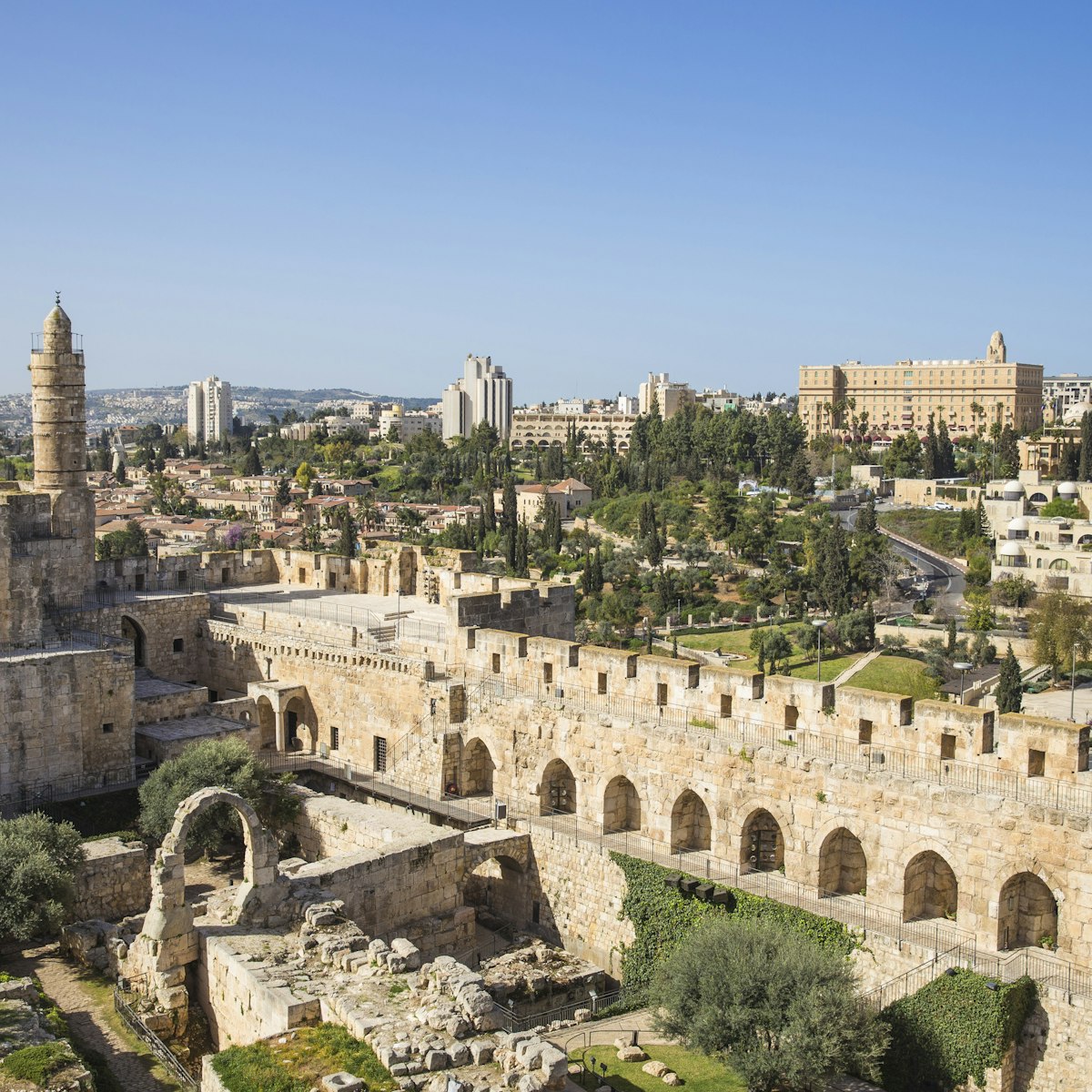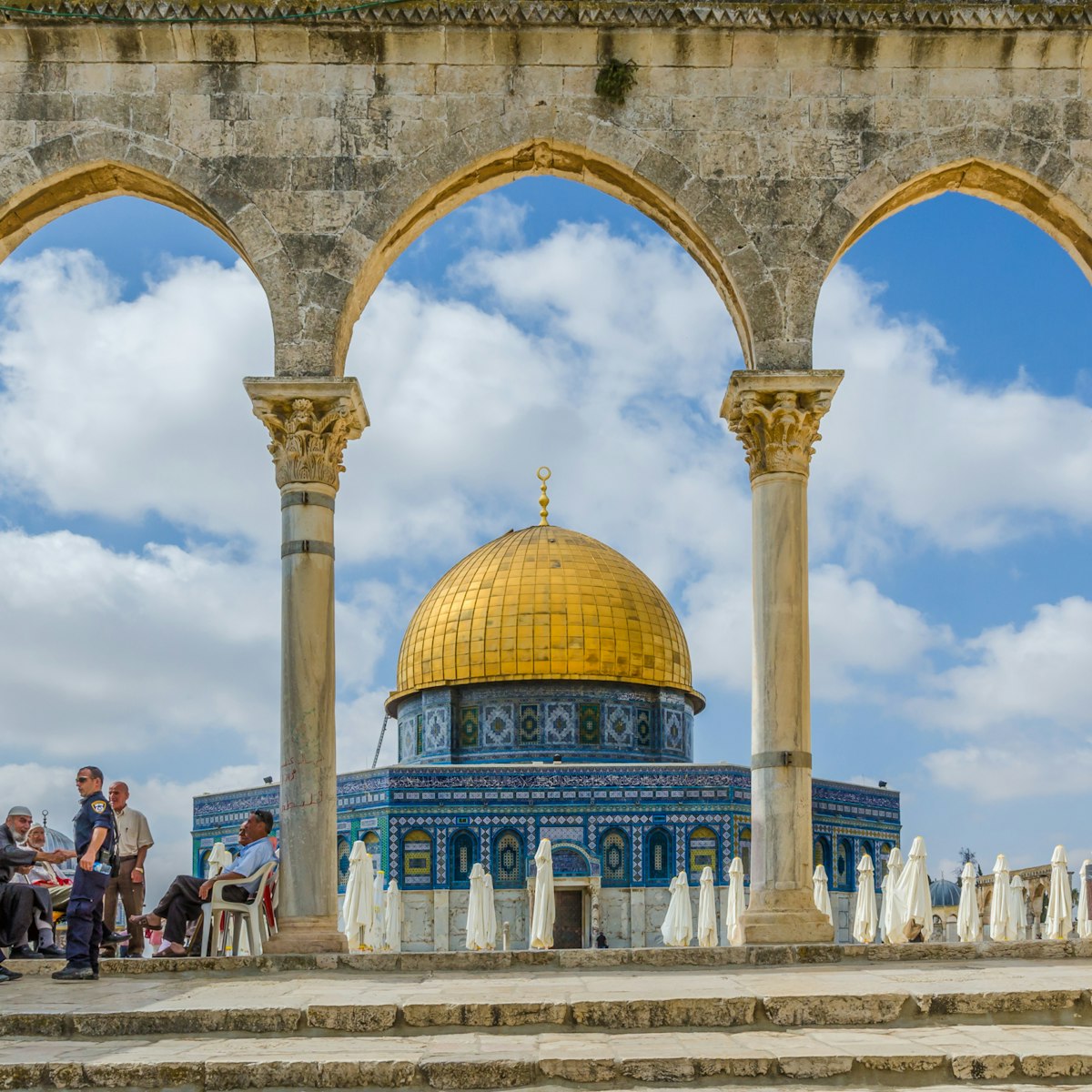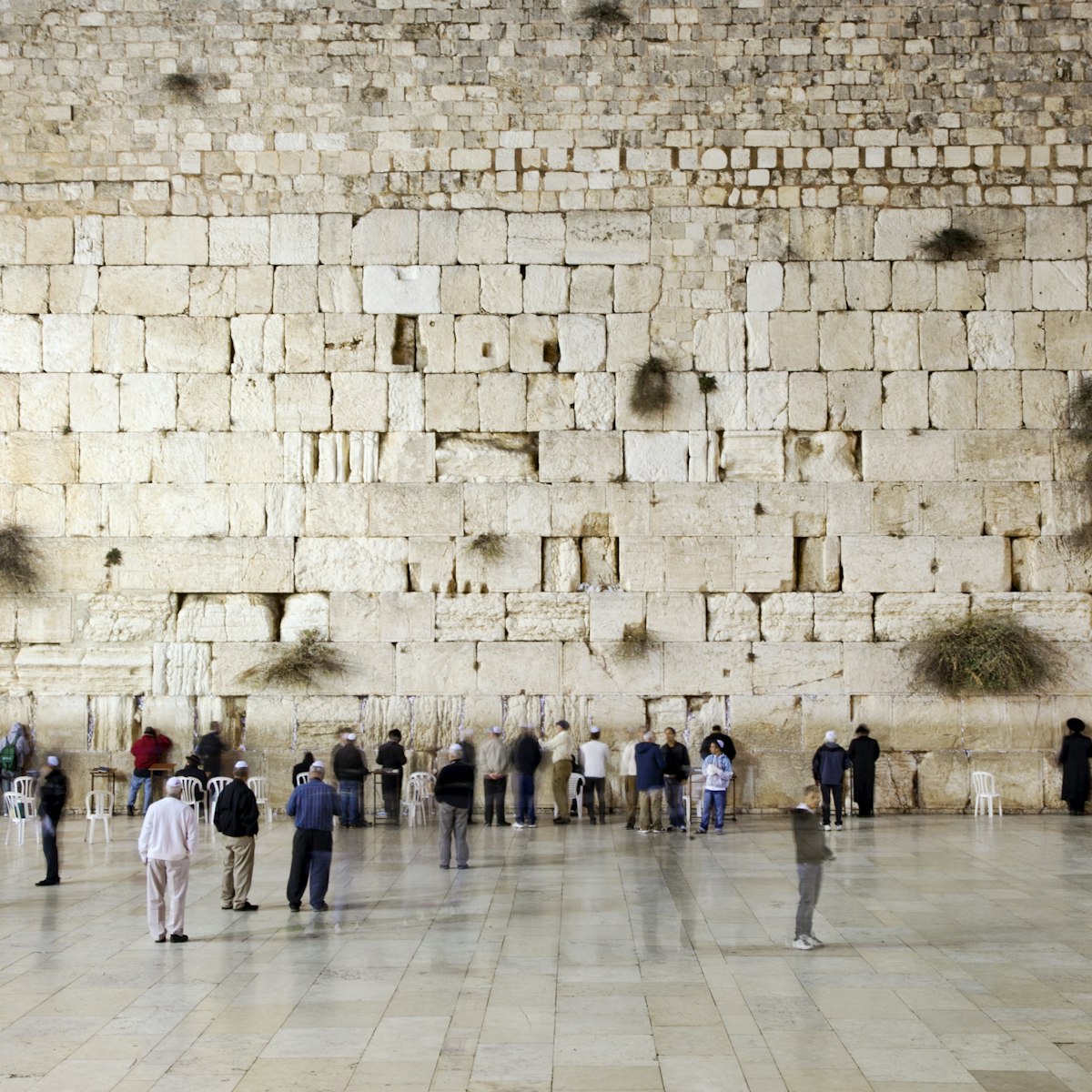Israel's official memorial to the six million Jews who died at the hands of the Nazis is powerful, poignant and a masterpiece of design. The museum's name was taken from Isaiah 56:5 and means ‘a memorial and a name’. As well as honouring the names of those killed, Yad Vashem's research centre continues to work tirelessly to record the names of victims who were not survived by anyone to mourn them. Allow at least three hours to visit this 18-hectare site.
Yad Vashem's main building is a vast concrete ark sunk into the earth, containing the Holocaust History Museum. Nine underground galleries in this prism-like hall detail the events leading up to the Shoah (the Holocaust), as well as the disturbing, deep-rooted history of anti-Semitism in Europe. With explanations in English and Hebrew, the galleries trace the story chronologically and thematically, and use artefacts, films, personal testimonies on video, photographs and art installations, leading visitors gradually out of darkness to a terrace overlooking the Jerusalem Forest.
Photos of those who perished (600 representing 6 million) cover the ceiling of the Hall of Names, and books filled with their names are arranged all around (one page for each person). A hole in the floor symbolises the lost unknown, victims whose names will never be recorded because they, their entire families, all their friends and everyone who had known them was killed, leaving no one to testify or say the mourning Kaddish (Jewish prayer). Sections of the circular shelves are also left empty, both symbolising the 'unknown' victims, as well as leaving space for the ongoing attempt to record as many names as possible.
Near the exit of the museum is a separate building housing the Museum of Holocaust Art, a collection of works created in ghettos and camps. Nearby there is an Exhibitions Pavilion housing temporary displays and a synagogue that visitors can use for private prayer; it is decorated with items from European synagogues that were destroyed.
In the Hall of Remembrance on the ground level an eternal flame burns near a crypt containing the ashes of victims brought from the death camps; the floor is inscribed with the names of 22 of the most infamous camps. Behind the hall are a number of other memorials, including the Cattle Car Memorial, one of the original train cars used to transport Jews from the ghettos to the camps. Also here is the Garden of the Righteous Among the Nations, established in honour of the thousands of non-Jews who risked their lives to rescue Jews during the Holocaust.
Closer to the visitors centre is the poignant Children’s Memorial, dedicated to the 1.5 million Jewish children who died in the Holocaust. Dug into the bedrock, the sombre underground memorial contains a solitary flame reflected infinitely by hundreds of mirrors. Recorded voices read the names of children who perished. Be careful as you enter as it will take a while for your eyes to adjust to the darkness. Close by, Warsaw Ghetto Square contains an imposing red-brick memorial to the fierce resistance of fighters in the Warsaw Ghetto Uprising of 1943.
The JLR Mt Herzl stop is a short walk away; the journey from City Hall takes 15 minutes. When you alight from the tram, cross the road towards the forest and walk for 10 minutes up gently sloping Hazikaron St. Alternatively, wait at the bus stop en route for a free shuttle, which runs every 20 minutes.
Note that on Thursday, many of the memorials close at 5pm (the Holocaust History Museum, Museum of Holocaust Art, Exhibitions Pavilion and the synagogue remain open until 8pm). Entrance to the Holocaust History Museum is not permitted for children under the age of 10.








